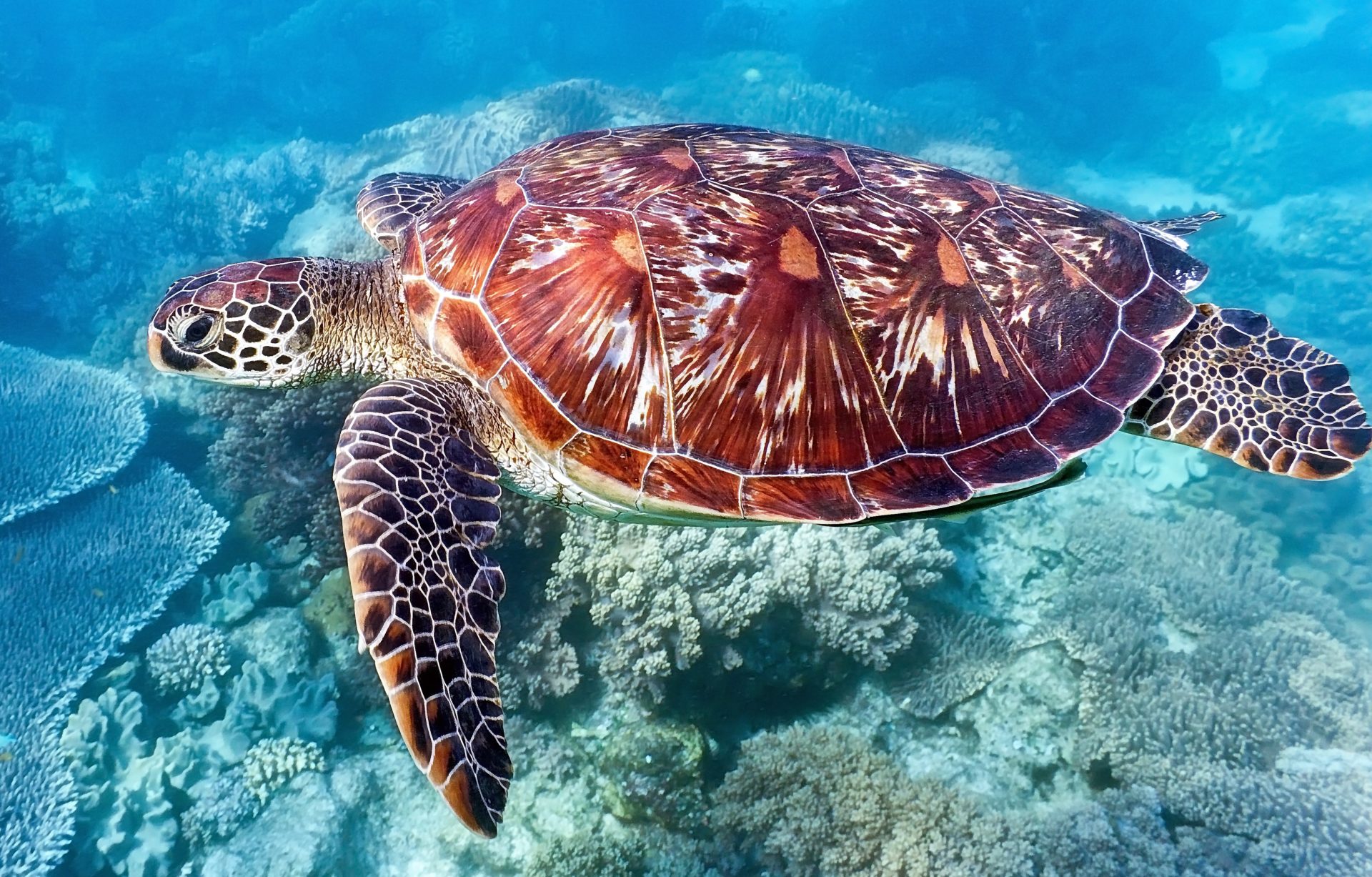Plesiosaurs were a clade of Mesozoic marine reptiles that dominated Earth’s oceans for nearly 140 million years. They were unique animals that came in an assortment of forms, ranging from pinniped-like animals that were effectively the Steller’s sea lions of their day, to giant elasmosaurs stretching longer than a city bus. Unlike modern seals and sea lions, they are known for having two matched sets of flippers, front, and back. And it is these flippers, and Plesiosaur swimming method was something, that has baffled paleontologists to this day. **
(Full video documentary by Max Hawthorne & Mark McMenamin)
PLESIOSAUR SWIMMING METHOD
The main argument when it comes to defining plesiosaur locomotion has been centered on the notion that two sets of flippers cannot be effectively deployed simultaneously for an effective thrust stroke. If they were, they would be pushing the same water, hence the animal couldn’t go any faster. This could be called the Principle of Flipper Redundancy; why use four fins to do a job when two are sufficient, as in sea lions? Numerous theories have been put forward as to why plesiosaurs had four flippers and how they used them. Some have surmised that they worked in alternate strokes, front then rear. Others have proposed that the rear flippers did the work and the front ones primarily steered. And still others have suggested the reverse – that the front flippers provided propulsion and the rear flippers steered.
Plesiosaurs did not use either set of flippers for steering purposes only. If you examine their skeletons, you’ll see the bones for both pairs of flippers were well developed and powerful, with large muscle attachment points. The muscles powering these paddles were huge and made for strength and endurance. Consider extant sea turtles. The large, well-developed forelimbs are the propulsion units, and the smaller, more restricted rear flippers are mainly for steering. Small flippers are quite adequate for steering purposes.
Comparing Plesiosaur’s Flippers to Extant Marine Animals
If we compare a plesiosaur’s flippers to those of extant marine animals that propel themselves through the water in a similar manner (seals and sea lions, penguins, and sea turtles) we see variations on a theme.
#1 Sea lions
Sea lions are the sleekest and most nimble. They can float motionless, turn on a dime, and accelerate rapidly. Penguins, although quick, are stiffer and more rigid, and sea turtles are considered the slowest and most cumbersome of the group due to their bulky shells.
Sea lions have numerous vertebrae and a flexible spine which allows them to move sinuously through the water. They also have large shoulder blades, somewhat like those of a primate, and flippers that move in a downward, arcing movement, almost like clapping one’s hands down and together. There isn’t a tremendous upper range of motion, and the power comes on the down-stroke, with the hind flippers mainly steering.
#2 Penguins
In penguins, the flippers move in more of an up and down motion with some backward push. The body is much more rigid. When we look at a penguin’s skeleton, we see that the muscles running from the arm bones are attached to an enormous, keeled breastbone. This acts as an anchorage point for the large pectoral muscles that provide thrust. However, it also adds rigidity to the bird’s body. Similarly, their flippers are more rigid and stiff. This is, again, a matter of structure. The penguin’s forelimbs consist of relatively few articulated bones, and are tightly attached to one another. The result is a paddle with very limited flex that rotates entirely from the shoulder.
#3 Sea turtles
Sea turtles develop the ultimate in body stiffness. Their flippers, however, are exceptionally flexible, able to move fluidly up and down through a considerable range of motion with an almost rubbery quality to them – more like a sea lion’s than a penguin’s. The reason for this is the skeletal structure of the flippers. As in a seal or sea lion, they are constructed of numerous small bones. This allows them to bend and flex. The flipper movement is from the shoulder, except the turtle can achieve substantially more elevation.
Now, let’s compare Plesiosaur swimming method and find out which of these animals’ techniques does a plesiosaur use in terms of flipper shape, range of motion, and body mechanics? The answer is a bit of all of them. If we look at the skeletal structure of a plesiosaur’s flippers, we can see that the multitude of bones in the paddle bear a far greater resemblance to that of either a sea turtle or sea lion than a penguin. Thus, we can safely conclude that the paddles of plesiosaurs were both strong and flexible, as one would expect from a pelagic hunter that had to accelerate quickly and change direction while pursuing prey.
The Difference Between Plesiosaur’s Flippers and These Marine Animals
The difference between their flippers and those of sea lions and sea turtles is range of motion. Sea lions use a relatively limited, hugging motion to propel themselves through the water. Sea turtles use a swimming motion more like that of plesiosaurs – at least in terms of the front flippers.
The difference between a sea turtle’s flippers and a plesiosaur’s is the limb design above the paddle. Sea turtles have an elbow joint which allows their forelimbs to achieve a high upstroke. In a plesiosaur, the humerus and femur insert directly into the shoulder/pectoral and pelvic girdles, making the joint more akin to a ball-and-socket joint. Although this allows for considerable range of motion and power throughout, plesiosaurs were unable to raise their front fins as high as a sea turtle, due to their lack of this elbow-style joint. Moving from the joint, they would have a penguin’s paddling speed, a sea turtle’s flipper flexibility and increased range of motion (but still lacking the upper elevation limits), and a body flexibility more akin to a sea lion than a sea turtle.
How These Flippers Worked
Now, let’s examine the Plesiosaur swimming method and how all four of a plesiosaur’s flippers worked in conjunction and simultaneously. The front flippers pushed down and back, similarly to those of a sea turtle (again, without the extreme elevation) while the rear flippers pushed more to the side and back. The front flippers therefore moved through a lower plane of motion than the rear, hence pushing water in a different range as well. In fact, when working in combination they moved twice as much water, allowing the animal to move surprisingly fast – sort of like a fish or whale with a tail twice as big, or a sea lion with two sets of flippers.
The skeletons of plesiosaurs confirm the different ranges of motions between the front and rear flippers. At the fore-flippers’ humeral insertion point, the pectoral/shoulder girdle angles upward, toward the animal’s head. When generating thrust, this allows the front flippers to sweep forward on the negative stroke and then come down powerfully on the positive. The power-stroke from the front limbs/paddles would most likely terminate at an angle (Figure 1).
Where the rear flippers insert into the pelvic girdle, the pelvis is angled in the reverse – up toward the tail. This enables the animal to raise its rear flippers higher in the water at its power stroke’s termination point than the front pair, encompassing a different plane of motion and pushing back hard, most likely finishing more parallel to the body (Figure 2).
The rib cages of these animals also support this hypothesis. The ribs are characteristically shortened, the rear ribs above the pelvic girdle typically more so than those above the pectoral. As in sea turtles (which often have an “alcove” in their shells to accommodate their front flippers upward lift), morphological adaptations typically reduce friction and impacts by moving body parts. Turtle flippers have large, powerful muscles, and as they’re flexing and hoisting the flippers up and back, both those muscles and the flippers themselves would rub against ribs that extended too far down. Hence, they became reduced in length. (Figure 3)

The divergence on the positive, or power strokes, provides the solution to plesiosaur swim mechanics. With both sets of flippers able to operate through separate planes of motion, both pairs of flippers provide substantial thrust. The result is a sleek, agile animal: one able to accelerate quickly and change direction at will. When confronted with a larger predator, it could usually outdistance or outmaneuver it as well. Full swim cycle animation:
It is important to note that there are key differences in the swim dynamics of long-necked plesiosaurs and short-necked plesiosaurs (pliosaurs). According to Halstead (1982, p. 141), pliosaurs had massive muscles for “pulling the limbs down and back.” However, the muscles involved in the “recovery stroke were particularly weak”:
“To begin the swimming stroke, the paddle was held with the upper surface facing forwards at an angle, like a bird’s wing in flight; when the limb was pulled downwards, it caused a power stroke with an upwards and forwards thrust. At the end of the power stroke, as the water flowed over the limb, it rotated so that the blade presented minimal resistance to the flow. The recovery stroke was completed by the dorsal muscles which pushed the limb forwards and then twisted the blade, ready for the next power stroke.” -L. Halstead
Halstead (1982) concluded that the powerful Plesiosaur swimming style allowed them to pursue their cephalopod prey to depths of 300 meters. The long-necked plesiosaur swim dynamics was very different, as the animal had balanced musculature for both the power and recovery stroke. This implies an ability to make very sharp turns, ideal for an animal with a fish-trapping jaw that needed to spin its body quickly to snap up passing fish. Long-neck plesiosaur limb bone anatomy also indicates an ability to make fast turns. Such a body design precludes an ability to make deep dives (Halstead 1982), and it is quite evident that all four fins were required for the quick twists employed to catch prey. A notable exception to this would be the Elasmosauridae, whose sheer size, coupled with the body mechanics required to compensate for such a long and massive neck, precluded sudden, quick changes in direction. As detailed by Hawthorne (2016) the giant elasmosaurs evolved exceptionally long necks to disguise the pressure waves their huge bodies produced. This enabled them to overcome the sensitive lateral lines that were their prey’s primary defense:
“By putting a snake-like head at the end of a long neck, the plesiosaurs bypassed the fish’s lateral line defensive strategy. With the marine reptile’s head being about the same size as the fish it hunted (and given their jaws’ ability to accommodate prey the size of their head, we can safely assume that this was usually the case) the displacement wave produced by the head would not be detected as a threat by the schooling fish. It would come up on their “scope” as just another member of the school. This would effectively allow the plesiosaur to follow the school along and basically graze like a cow, swimming with the fish, clamping down on a victim at the rear of the school, and then dropping back a few feet to gulp it down before repeating the scenario over and over.” -M. Hawthorne
by Max Hawthorne and Dr. Mark McMenamin.
References
Halstead, L. B 1982. The Search for the Past. Doubleday, Garden City, NY.
Hawthorne, M 2016. https://kronosrising.com/plesiosaur-long-necks/







